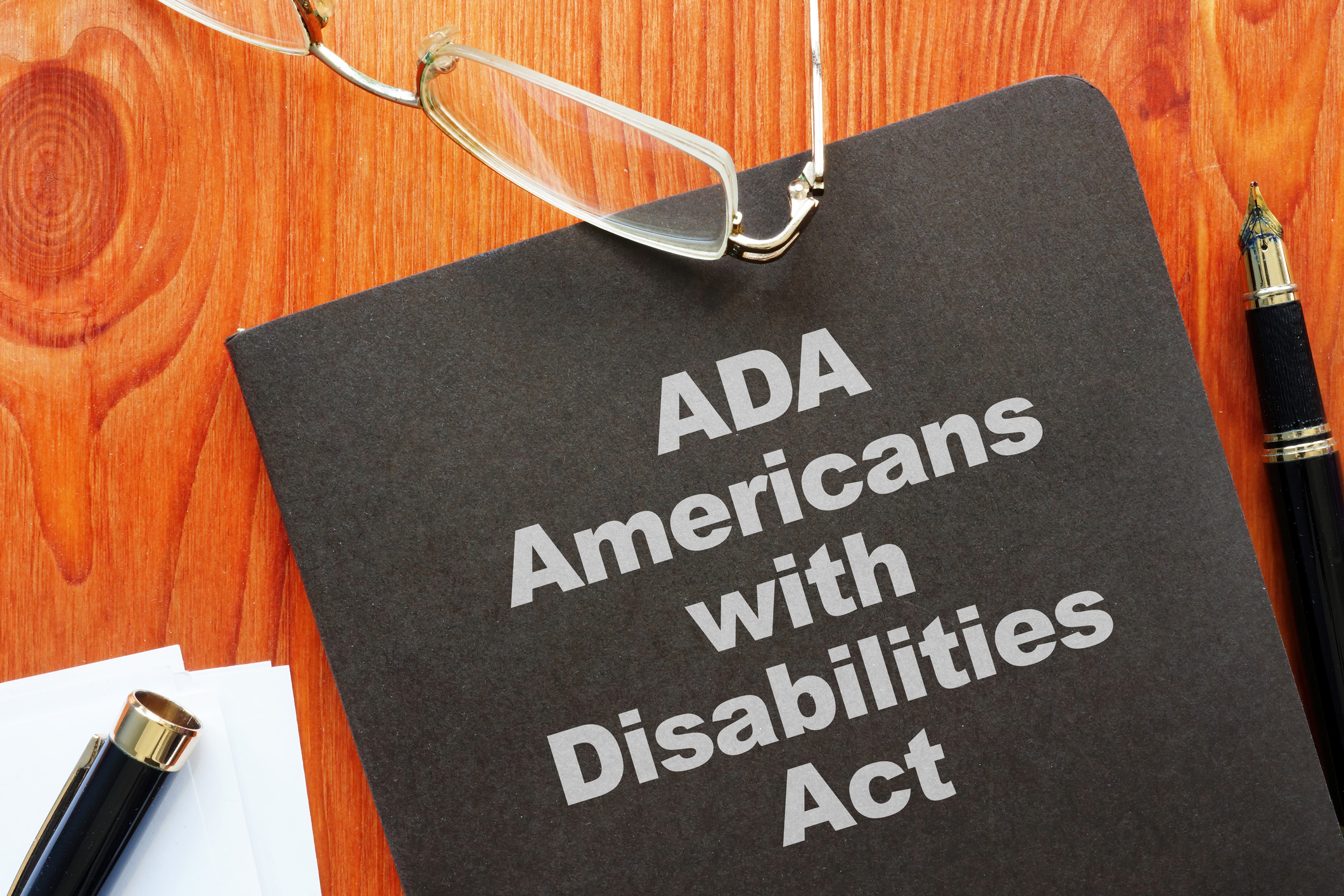Americans with Disabilities Act: A Checklist for Compliance

While employers are busy complying with the ever-changing landscape of regulations during a pandemic, “normal” employment issues, such as disability accommodations, remain as important as ever.
In addition to prohibiting discrimination, the Americans with Disabilities Act (ADA) requires employers to provide reasonable accommodations to qualified individuals with disabilities who are employees or applicants for employment, unless doing so would cause undue hardship.
While every situation is different and requires a case-by-case analysis, when an employer is faced with an accommodation request, the following guidance will help avoid common ADA missteps:
1. Determine if the accommodation process has been triggered.
The accommodation process can be triggered in obvious and nonobvious ways. The most overt is when an employee expressly requests an accommodation. Sometimes, however, an employee has not sought accommodation, but the employer has directly observed or has objective evidence that an employee has a physical or mental impairment that is limiting job performance. In this situation, an employer can ask whether the employee needs an accommodation. If the employee responds in the affirmative, this triggers the accommodation process.
In other situations, an employee has not sought accommodation, but the employer may suspect that the employee could have an impairment that is impacting job performance. In this situation, the employer should not ask whether the employee needs accommodation, but should follow the best practice with any struggling employee and simply ask if there is some way the employer can help the employee perform the task at issue. If the employee declines help, no further action is necessary. If the employee indicates that a potential disability is the source of the performance problem, the accommodation process is then triggered.
2. Determine if the employee/applicant is a “qualified individual with a disability.”
The ADA protects “qualified individuals with disabilities.” A qualified individual is a person who has the legitimate skill, experience, education, or other requirements of a job, and who can perform the “essential functions” of the position with or without reasonable accommodation. In some cases, it is clear that an applicant or employee has all the basic qualifications for a job, and equally obvious that they have a disability requiring some sort of accommodation to perform a key part of the job. In this situation, generally, the employer can move on to discussing potential accommodations.
However, in many cases, the existence of a “disability” is not obvious, and whether and how the disability limits the employee’s ability to perform the essential functions of the job is not clear. Likewise, the types of accommodations that might be effective are often not clear. In these situations, it is generally best to get input from the employee’s/applicant’s healthcare provider.
3. Seek input from the employee’s/applicant’s healthcare provider.
To determine whether an individual’s physical or mental condition meets the ADA’s definition of a disability, an employer may ask an employee to have their healthcare provider complete a questionnaire about their limitations, the impact of those limitations on the ability to perform the essential functions of the job, and the duration of the limitation, as well as to opine on potential accommodations. It is always advisable to include a written position description with this questionnaire.
4. Follow-up for more information as necessary.
If more information is needed to determine whether an employee has a “disability” or is otherwise a “qualified individual” under the ADA, direct discussions with the employee/applicant or requests for further information from their healthcare provider should be undertaken. This open exchange of information is critical to the process.
5. Discuss the employee’s/applicant’s limitations and examine possible accommodations.
If it is determined that the employee/applicant is a qualified individual with a disability, a good next step for the employer is to simply ask the employee/applicant what their proposed accommodation needs would be. Generally, reasonable accommodation requests include:
- Changes to the job application process (e.g., providing application materials in braille or large print);
- Changes to the work environment or the manner in which the position is usually performed (e.g., standing desk); or
- Changes “that enable a covered entity's employee with a disability to enjoy equal benefits and privileges of employment as are enjoyed by its other similarly situated employees without disabilities” (e.g., provide alternative formats, such as giving feedback in writing rather than verbal for employees who communicate better through written materials). See 29 C.F.R. § 1630.2(o)(1)(i-iii).
The employer should then assess each of the suggestions to determine if they are reasonable, how effective they would be, and, if deemed effective, how to implement them in order to enable the employee to perform the essential functions of their job. The employer must also assess whether any of the suggested accommodations should be denied because they would impose an undue hardship on the business. One quick note of caution regarding “undue hardships”: an employer should carefully consider whether to deny an accommodation request on this basis because doing so could open up their financials to inspection if such a determination is challenged.
6. After discussing and exploring various solutions with the employee/applicant, reach a decision and properly document it.
While an employee’s preferences should be taken into account, the employer has the right to choose between multiple effective accommodations. The goal is to be sure that the employee understands the accommodations being made and agrees that such accommodations will aid them in performing the essential duties of their position. It helps to approach this interactive process in a collaborative, rather than authoritarian, manner.
Because effectively accommodating an employee or applicant with a disability depends almost entirely on the unique facts of each situation, it is vitally important to go through all the above steps for each accommodation, and to properly document each step in the process.
Determining if an employee or applicant requires accommodation under the ADA can be a complex process. Lewis Brisbois’ employment attorneys regularly counsel employers on such matters. For more information, contact the author of this post or visit our Labor & Employment Practice page to find an attorney in your area.
